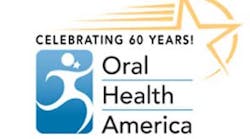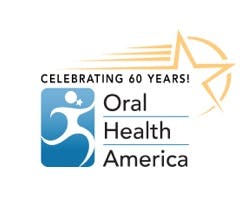_________________________________
RELATED
Study examines 7 states' decision to increase coverage for Medicaid adult dental benefits
Oral Health America announces 14th annual NSTEP slogan contest
_________________________________
Although Medicare revolutionized the way older adults access and pay for health care, many critical health benefits are excluded, such as routine and preventive dental services. Each day 10,000 older Americans are retiring. In fact, this cohort is expected to reach 72.1 million by year 2030.
“Maintaining a healthy mouth is one of the keys to independence as we age because of the vital connection to overall health and well-being,” said Beth Truett, President & CEO of Oral Health America.“ However, 70% of older Americans lack dental insurance because of inadequate financial resources and the need to cover the costs of daily living like housing, food, and transportation. This is a situation in a country as wealthy as ours that must be addressed in our lifetime.”
Today’s older adults are living more independently than previous generations. Nearly 90% of older adults want to stay in their own homes as they age, often referred to as “Aging in Place.” While oral health across the lifespan has improved in the last half-century, it is still crucial to raise awareness and create good policy to ensure that older Americans have the opportunity to live healthy, independently, and in their homes.
For more information about Oral Health America’s advocacy efforts, please visit oralhealthamerica.org/take-action.







